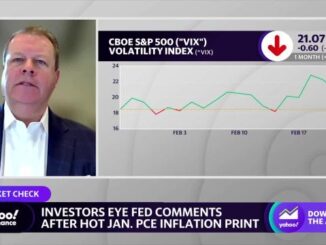
Job growth continued in February, but at a slower pace, suggesting that the Federal Reserve interest rate hikes are having at least a mild impact on the labor market. However, the continued job market resilience could equate to even tighter monetary policy, spelling hard times ahead for the housing market.
Total nonfarm payroll employment rose last month by 311,000 jobs compared to January, according to data released Friday by the Bureau of Labor Statistics. By comparison, the job market gained 517,000 jobs month over month in January.
“There are signs there might be a shift in the labor market.” Lisa Sturtevant, Bright MLS’ chief economist, said in a statement. “Employers added fewer jobs in February, but overall job growth is still running strong. Before the pandemic, we were adding an average of only about 200,000 jobs each month.”
In addition to the slower month-over-month job growth, the unemployment rate also rose from 3.4% in January to 3.6% in February — with the overall number of unemployed persons increasing to 5.9 million.
Overall, the unemployment rate has shown little net movement since early 2022.
“The unemployment rate increased to 3.6 percent, partly driven by another increase in labor force participation, but remained well below historical averages,” Joel Kan, the Mortgage Bankers Association’s vice president and deputy chief economist, said in a statement. “We expect the unemployment rate to increase over the course of this year as the economy cools, reaching 4.8 percent at the end of the year.”
Slower wage growth is also good news for the Federal Reserve, which is still trying to fight inflation.
“Wage growth climbed by 0.2% in February, which was the slowest monthly increase since February 2022,” Odeta Kushi, the First American deputy chief economist, said in a statement. “In the topsy-turvy, upside-down economic world we are in, rising unemployment and falling wage growth are a good thing for the inflation fight.”
The construction sector added 24,000 jobs in February thanks to a large uptick in the specialty trade contractors segment of construction, which gained 13,400 jobs, and residential specialty trade contractors accounted for 11,200 of those jobs.
In addition, residential construction gained 1,200 jobs, while non-residential construction added 1,700 jobs during the month.
“Residential building construction employment is up 3% year over year, while non-residential picked up by approximately 5%. Residential building is up 12% compared with pre-pandemic levels, while non-residential building is up 1.2%,” Kushi said. “Breaking down month-over-month job growth in the construction industry, the fastest monthly growth came from residential specialty trade contractors, indicating ongoing strength for the remodeling market. While this month’s jobs report reflects a resilient construction labor market, the January JOLTS report indicated some signs of weakness. Construction job openings collapsed in January to the lowest level since October 2020.”
The real estate and rental and leasing services sector also experienced jobs growth in February, adding 9,400 jobs, with real estate adding 3,900 jobs and rental and leasing services gaining 5,400.
In February 2020, a combined 300,000 were employed in “real estate credit” and as mortgage and nonmortgage loan brokers. As of January 2023, there were roughly 349,400 people in those jobs, suggesting that the industry still has a large number of cuts to make in the coming months as the housing market slows to a crawl.
The lion’s share of the job growth in February came from gains in the leisure and hospitality sector (up 105,000 jobs), the retail trade sector (up 50,000 jobs), the government sectors (up 46,000 jobs), and the health care sector (up 44,000 jobs).
Despite the slower wage growth and rising unemployment rate, economists believe the Federal Reserve will continue to raise interest rates in the coming months.
“Fed Chair Powell communicated earlier this week that incoming data on the U.S. economy continues to show strength and that a higher level of interest rates, and potentially for a longer period of time, is likely needed to cool inflation,” Kan said. “The housing market typically benefits from strong employment conditions, but as monetary policy has tightened to combat inflation, bringing about higher rates and tighter financial conditions, homebuyers have pulled back over the past year. We expect the economy to go into a mild recession this year, and with that a cooling in home prices and lower mortgages rates, which should help affordability conditions and bring a gradual recovery in housing activity.”



